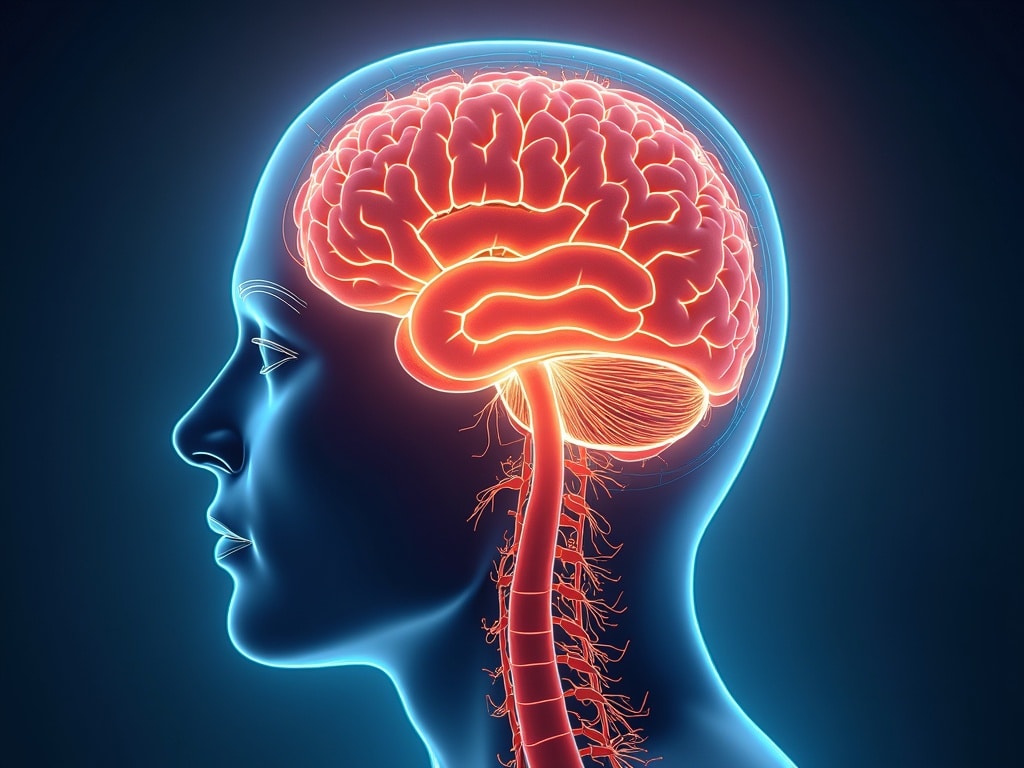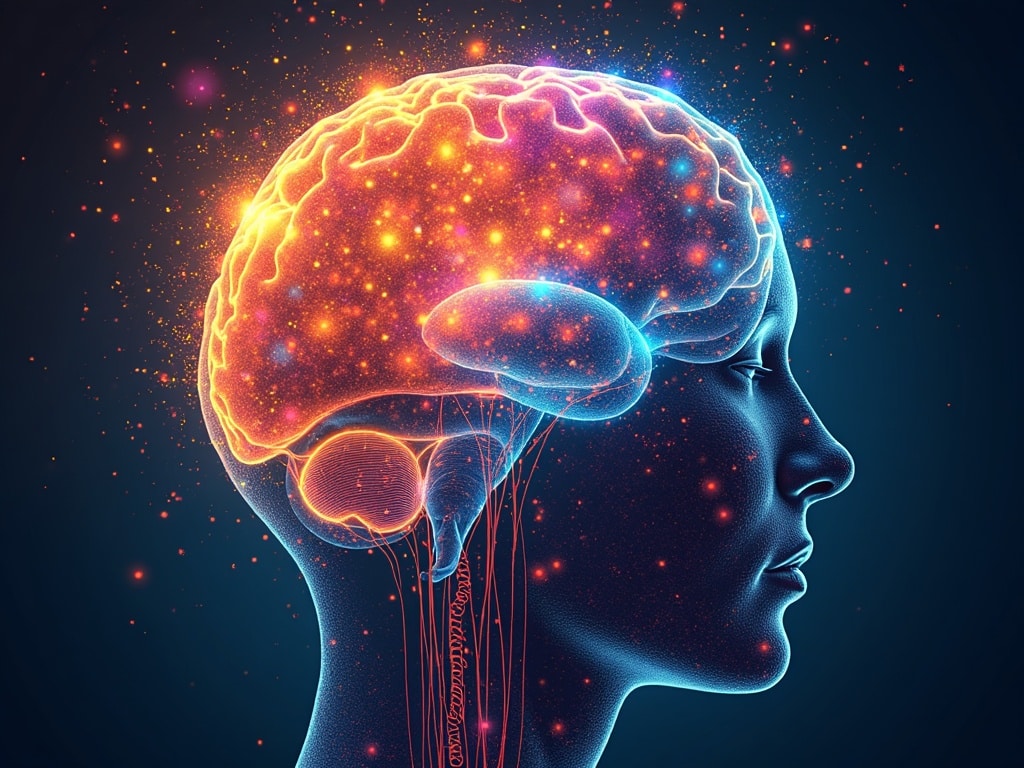How to Control Pain With Your Mind: A Comprehensive Guide
Imagine a life where you're not a prisoner to pain, where you possess the power to influence its intensity and impact. It sounds like science fiction, right? But the truth is, our minds wield incredible power over our bodies, and learning how to harness this power can be a game-changer in managing chronic or acute pain. This isn't about denying pain or pretending it doesn't exist; it's about understanding the complex interplay between mind and body and using that knowledge to take control.
The Science Behind Mind-Body Pain Management
For years, many dismissed the idea of mind-body connection as mere new-age fluff. However, advances in neuroscience and pain research have revealed the profound ways our thoughts, emotions, and beliefs impact our physical experiences, including pain.
Here's a simplified breakdown of the science:
- The Pain Pathway: When you experience an injury or stimulus that causes pain, nerve signals travel to your brain. However, the brain doesn't just passively receive these signals. It interprets them, modulates them, and ultimately decides how much pain you perceive.
- The Role of the Nervous System: Your nervous system, particularly the autonomic nervous system (ANS), plays a crucial role. The ANS has two main branches: the sympathetic nervous system (responsible for fight or flight) and the parasympathetic nervous system (responsible for rest and digest). When stressed or anxious, the sympathetic nervous system kicks in, potentially amplifying pain signals. Conversely, activating the parasympathetic nervous system can promote relaxation and reduce pain.
- Neuroplasticity: Our brains are incredibly adaptable. This neuroplasticity means that chronic pain can actually rewire the brain, making it more sensitive to pain signals. However, this also means that we can, with conscious effort, rewire the brain *againto reduce pain perception.
- The Power of Endorphins: Our bodies naturally produce endorphins, which are natural pain relievers. Activities like exercise, laughter, and meditation can stimulate endorphin release, helping to dampen pain signals.
Understanding these basic principles is the first step in learning how to control pain with your mind. It empowers you to move from feeling like a victim of your pain to becoming an active participant in your pain management.
Mindfulness Meditation for Pain Relief
Mindfulness meditation is a powerful tool for managing pain. It involves focusing your attention on the present moment without judgment. This practice helps you to observe your pain without getting carried away by negative thoughts and emotions that can amplify it.
Here's how to practice mindfulness meditation for pain relief:
- Find a Quiet Space: Choose a comfortable and quiet place where you won't be disturbed. You can sit in a chair, lie down, or sit on a cushion – whatever feels most comfortable for your body.
- Focus on Your Breath: Gently direct your attention to your breath. Notice the sensation of the air entering and leaving your body. You don't need to change your breath in any way; simply observe it.
- Acknowledge Your Pain: As you focus on your breath, you will likely notice sensations of pain. Acknowledge these sensations without judgment. Don't try to push them away or resist them. Simply observe them as you would any other sensation.
- Notice Your Thoughts and Emotions: You will also likely notice thoughts and emotions arising in response to your pain. Again, acknowledge these thoughts and emotions without judgment. Notice them, and then gently redirect your attention back to your breath.
- Practice Regularly: The key to success with mindfulness meditation is regular practice. Start with just 5-10 minutes a day and gradually increase the duration as you become more comfortable with the practice.
Benefits of Mindfulness for Pain:
- Reduced pain intensity
- Improved emotional regulation
- Increased sense of control
- Reduced stress and anxiety
Cognitive Behavioral Therapy (CBT) for Pain Management
Cognitive Behavioral Therapy (CBT) is another highly effective mind-body technique for managing pain. CBT focuses on identifying and changing negative thought patterns and behaviors that contribute to pain and disability.
Here's how CBT can help with pain management:
- Identifying Negative Thoughts: CBT helps you to become aware of negative thoughts related to your pain, such as catastrophizing (This pain is never going to go away) or fear-avoidance (I can't do anything because of my pain).
- Challenging Negative Thoughts: Once you identify negative thoughts, CBT helps you to challenge them by examining the evidence for and against them. You learn to replace negative thoughts with more realistic and helpful ones.
- Behavioral Activation: Pain can often lead to inactivity and social isolation, which can worsen pain and depression. CBT helps you to gradually increase your activity levels and re-engage in enjoyable activities, even when you're experiencing pain.
- Coping Skills Training: CBT teaches you a variety of coping skills for managing pain, such as relaxation techniques, problem-solving skills, and communication skills.
CBT is typically delivered by a trained therapist, but there are also self-help books and online resources available.

Visualization and Guided Imagery for Pain Relief
Visualization and guided imagery involve using your imagination to create mental images that promote relaxation and pain relief. This can be a particularly helpful technique for distracting yourself from pain and activating your body's natural healing mechanisms.
Here's how to use visualization and guided imagery for pain management:
- Find a Comfortable Position: Lie down or sit in a comfortable position. Close your eyes and take a few deep breaths.
- Choose Your Imagery: Select an image that you find calming and relaxing. This could be a peaceful beach, a tranquil forest, or a cozy cabin. You can also use images that relate to your pain, such as imagining your pain as a color that is slowly fading away.
- Engage Your Senses: As you visualize your chosen image, engage all of your senses. What do you see? What do you hear? What do you smell? What do you feel? The more vivid and detailed your imagery, the more effective it will be.
- Focus on Positive Sensations: As you immerse yourself in your imagery, focus on positive sensations, such as warmth, relaxation, or lightness. Allow these sensations to spread throughout your body, easing your pain.
- Practice Regularly: Like mindfulness meditation, visualization and guided imagery become more effective with regular practice.
There are many guided imagery recordings available online that can help you get started.
Self-Hypnosis for Pain Control
Self-hypnosis is a technique that allows you to enter a relaxed, focused state of mind, making you more receptive to suggestions that can help reduce pain. It's not about being controlled by someone else; it's about learning to control your own mind and body.
Here's a simple self-hypnosis technique for pain relief:
- Find a Quiet Place: Find a comfortable and quiet place where you won't be disturbed.
- Focus Your Attention: Choose a focal point, such as a spot on the wall or a candle flame. Gently focus your attention on this point.
- Deepen Your Relaxation: As you focus on your focal point, begin to deepen your relaxation. You can do this by taking slow, deep breaths and visualizing a wave of relaxation washing over your body.
- Give Yourself Suggestions: Once you are in a relaxed state, begin to give yourself positive suggestions related to pain relief. For example, you might say, My pain is decreasing, or I am feeling more comfortable.
- Practice Regularly: The more you practice self-hypnosis, the easier it will be to enter a relaxed state and the more effective the suggestions will be.
It's important to note that self-hypnosis is not a magic bullet. It takes practice and consistency. If you are interested in learning more about self-hypnosis, consider working with a qualified hypnotherapist.
Other Mind-Body Techniques for Pain Relief
In addition to the techniques described above, there are many other mind-body techniques that can be helpful for managing pain, including:
- Yoga: Yoga combines physical postures, breathing exercises, and meditation to promote relaxation and reduce pain.
- Tai Chi: Tai Chi is a gentle form of exercise that involves slow, flowing movements. It can help to improve balance, flexibility, and coordination, and it can also reduce pain and stress.
- Biofeedback: Biofeedback involves using electronic sensors to monitor your body's physiological responses, such as heart rate, muscle tension, and skin temperature. This information can help you to learn how to control these responses and reduce pain.
- Art Therapy and Music Therapy: Engaging in creative activities can be a powerful way to distract yourself from pain and express your emotions.
Important Considerations
While mind-body techniques can be incredibly effective for managing pain, it's important to remember that they are not a substitute for medical care. If you are experiencing pain, it's essential to consult with a doctor to determine the underlying cause and receive appropriate treatment. Mind-body techniques should be used as part of a comprehensive pain management plan that may also include medication, physical therapy, and other interventions.
Also, be patient with yourself. It takes time and practice to learn how to control pain with your mind. Don't get discouraged if you don't see results immediately. Keep practicing, and you will eventually experience the benefits.
Taking Control of Your Pain
Learning how to control pain with your mind is a journey, not a destination. It requires commitment, patience, and a willingness to explore new approaches. By understanding the science behind the mind-body connection and practicing these techniques regularly, you can empower yourself to take control of your pain and live a fuller, more meaningful life. The power is within you – it's time to unlock it.

